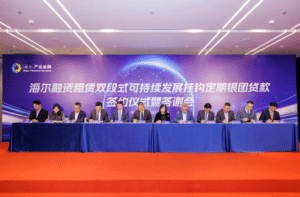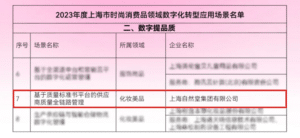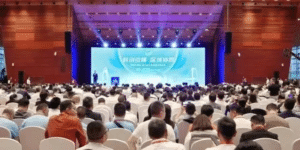Xiansheng Yecai Hu Yanxuan: In the VUCA era, the industry-finance integration management platform is worth looking forward to

[ad_1]
Enterprises pursue value maximization, and finance is the most direct reflection of enterprise value and operating results, so it will be given priority by enterprises. We can see that when many companies are undergoing digital transformation, the integration of business and finance will become a priority.
In the present full of uncertainties, what are the technological trends worthy of attention in the field of business finance? How will the integration of business finance help business development? IT168 & ITPUB recently interviewed Hu Yanxuan, the co-founder and president of Xiansheng Yecai. Xiansheng Yecai is a company focused on In 2021, a service provider of business-finance integration solutions will be strategically invested by PricewaterhouseCoopers.
Hu Yanxuan introduced that in the face of the current increasingly uncertain and unstable market, the success of enterprises needs to focus on customer value and respond quickly to the market. Corporate CFOs will now focus on:
·How can finance realize the flexible and effective empowerment of front-end business while taking into account the overall management of the enterprise?
Facing the rapidly changing market and ambiguous development paths, how can enterprises have flexible strategic and tactical options?
Faced with the intertwining of various business factors, how to coordinate with various departments of the enterprise, break down the barriers of the organization, and jointly face the requirements of enterprise value creation and growth?
In the past, the clock-like fixed logic was only applicable to simple systems. Today, the environment and ecology faced by enterprises is a unique and complex hierarchical organization. The traditional enterprise information system adopts process-oriented mechanical logic, so it is fixed and the feedback lags behind. Multiple independent application systems only rely on limited data integration, and there is almost no unified data view of the entire enterprise, making it difficult to fully utilize the value of data in information islands.
Therefore, when selecting a financial digital system, enterprises will pay attention to whether the product can “integrate internal management data from various aspects, realize unified data, analysis, and efficient collaboration of interaction, and provide the ability to provide agile insights, analysis, and action measures.” In addition, the product’s data management capabilities, technological leadership, ease of use, security, scalability, and compatibility with other systems are all key concerns of customers in model selection. Especially for central state-owned enterprise customers, compliance with the Xinchuang standards and full compatibility with the Xinchuang ecology will soon become access requirements.
Specific to customers in different industries, the demand for products is different. For example, customers in the financial industry pay more attention to the safety and stability of products; customers in the manufacturing industry have many data sources, so they pay more attention to whether the product has multiple data interfaces. Whether the data processing capability and the applicability of the business scenario are strong; the front-end business and product lines of chain retail customers need to follow the market to quickly adjust to meet the changing user needs. They value whether the system can be agile and flexible to support front-end business analysis.
Looking back on 2022, Hu Yanxuan believes that the business and financial integration management platform (xP&A) is a product technology direction that deserves special attention in the financial field. The current global economy has entered the VUCA era, and my country’s development environment is becoming increasingly complex and uncertain. In the current environment, how to achieve “agility” and maintain “growth” is a common issue for enterprises. Business and financial integration management platform (xP&A) is considered to be a new answer to business complexity and continuous changes.
The business-finance integration management platform integrates the data of different functions in the enterprise value chain such as marketing, sales, supply chain, and human resources in a unified platform in a monetized financial language, providing data management, data analysis, and planning forecast capabilities.
Compared with the past, the business-finance integration management platform can provide:
·Support continuous, collaborative and agile planning, modeling and analysis throughout business and finance.
·Integrate the scattered data islands into a unified data analysis platform, and compile the business knowledge map for analysis and application.
·Reduce the time to manage data, and support the democratized application of business and financial data in a low-code and assembleable way.
Hu Yanxuan believes that the amount of data can bring about essential differences, and quantitative changes will lead to qualitative changes. With the continuous connection of business and financial scenarios, data ecology such as internal business data, financial data, external market data, financial data, and environmental data of the enterprise will converge into a network, and the enterprise will establish a huge business data network and data ecology. Condensed into a corporate management knowledge map in the financial integration management platform.
For this reason, the business-finance integration management platform requires a data architecture and data management capabilities that are completely different from the past:

Looking forward to 2023, Hu Yanxuan believes that in addition to xP&A, Data Fabric (data weaving) is a technology development trend worthy of attention. Data Fabric emphasizes that the design and deployment of data systems should not be constrained by the choice of platform. Data islands scattered everywhere can be discovered and used in a unified manner, and construction and continuous analysis are carried out based on active metadata. Xiansheng Cloud is built based on Data Fabric.
Xiansheng Cloud is the base of Xiansheng Yecai’s “Lean Chemical Industry and Financial Integration Management and Control Platform”, which is a new generation of business and financial integration platform. The platform builds complete data on top of ERP – Interaction-analysis closed-loop management helps enterprises to achieve lean management, agile analysis, and full-chain collaboration. Therefore, technically, Xianshengyun puts forward higher requirements.
Data Fabric pays attention to the comprehensiveness and integrity of data. Xianshengyun uses data lakes, data centers, data warehouses, NoSQL, etc. for data storage, and accesses remote data through data mapping, thereby enhancing data coverage; in Xianshengyun In terms of data management, AI capabilities are integrated, which can automatically implement analysis based on semantics and knowledge, understand data and its business meaning, and automatically build data catalogs in the form of knowledge graphs; Xiansheng Cloud provides flexible services from different perspectives such as business ledgers and financial data. The function of creating a data model can complete the transformation from physical database to business semantics, and provide unified semantic encapsulation; knowledge graph is a highlight of Xiansheng cloud platform, and data is integrated, governed, arranged and virtualized in the process , will form a huge data network. The knowledge map can not only help users to trace the data and process mining, but also allow users to discover the hidden value in the data through AI means.
Xiansheng Cloud realizes business and financial data connection through unified data access, data management, data orchestration and business and financial models, so as to solve the problem of enterprise data islands and help enterprises to digitize and data intelligence.
In 2023, Xiansheng Finance and Accounting will focus on the continuous innovation of the new generation of business and financial fusion data technology, break through the breakpoints of business and financial data in lean, collaborative expansion of business and financial execution applications, agile assembly of financial management and control models, and diversification of precipitation industries Scenarios and cases, and integration to create an ecology of business, financial resources, and five aspects continue to make efforts. (This article/IT168 article/Ren Chaoyang)
[ad_2]
Source link







